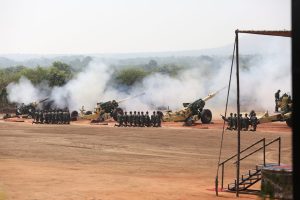
By Lt General BS ‘Balli’ Pawar (Retd.)
New Delhi. 26 September 2021. The Regiment of Artillery’s modernization and transformation process has finally been set into motion. The Government’s decision to involve the private sector in defence production and the focus on ‘Make in India’ and indigenisation, has given a major boost to this artillery modernisation process. There is an urgent need to maintain this momentum to upgrade/modernise the artillery and ensure accelerated acquisitions to effectively redress the growing obsolescence of the Indian Artillery in the coming decade.
Introduction
The Army’s Artillery modernization and transformation plan finalised over two decades ago for the induction of approximately 3000 modern artillery howitzers finally got an impetus in the year 2018, when two modern and advanced artillery systems were inducted, namely the American M777 A2 Ultra Light Howitzer (ULH) and the South Korean K9 Vajra Tracked Self Propelled (SP) Gun System – the last modern system inducted into artillery was the controversial Bofors FH 77 155mm/39 caliber howitzer from Sweden in 1998.
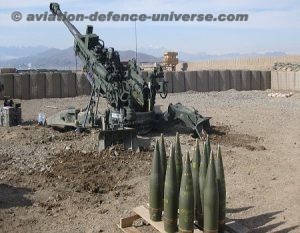
Concurrently, the success of the indigenously developed 155mm/45 caliber ‘Dhanush’ gun (upgraded version of the Bofors) and reports of the indigenously developed Advanced Towed Artillery Gun System (ATAGS) achieving 40 km plus range in the development firing were certainly encouraging developments in the modernization push. Alongside these positive developments, the long drawn process of trials and evaluations for the 155mm/52 Caliber Towed Gun Systems, the most crucial project of the artillery, reached its final conclusion in Feb 2019 with the Israeli Elbit’s ATHOS gun emerging as a clear winner. However come 2021, a reality check points to the whole modernization process slowing down and faltering with number of issues of concern emerging in some of the major projects like the Dhanush, ATAGS as well as in the induction process of the ATHOS Towed Gun System. In fact artillery modernization was the only worthwhile process in the Army that was on track but is now stumbling.
Positive Developments
Before I delve on the problem areas let me cover the two major success stories of two important projects involving the US BAE Systems M777 ULH (155mm/39 caliber) and the Korean Samsung Techwin’s ‘K9 Thunder’ now called the K9 Vajra-T tracked SP gun (155mm/52caliber). The M777 ULH is ideally suited for mountainous and high altitude terrain and 145 pieces are being acquired through the Foreign Military Sales route with the United States. The contract was signed in Nov 2016 by BAE’s partner Mahindra Defence Systems and the gun was formally inducted into the Army in Nov 2019. One of the notable features of this gun is that it can be easily airlifted under slung by Chinook helicopters in the mountains. As per reports about 60 guns have already been inducted and the balance 85 are likely by mid next year – the project is on track.
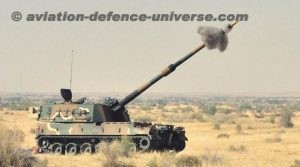
The K9 Vajra-T gun system is being produced in India by L & T in collaboration with the Korean partner – the contract was won by L & T and signed in 2017 for 100 tracked SP guns and the first three guns were inducted in Nov 2019. Sticking to their commitment L& T has delivered the 100th K9 Vajra-T to the Army in Feb this year making it the first Artillery Modernisation Project to be completed successfully and in the scheduled timeframe. Having now gained the requisite expertise for manufacture of such an advanced weapon system, there are chances of additional orders being placed on L & T to cater to the shortfall created by the shelving of the wheeled SP project a few years back.
There has also been progress in the Artillery’s Surveillance, Target Acquisition and Retaliatory Capabilities along with advancements in the field of Rockets and Missiles. The development and induction of the indigenous ‘SWATI’ Weapon Locating Radar (WLR) and a quantum increase in the ranges of the Pinaka Rocket System, presently work in progress and ‘Brahmos Cruise Missile’ are indicative of the same.
Projects Needing Urgent Attention
Dhanush Project 155mm/45 Caliber – The Dhanush gun is being produced by the Ordnance Factory Board (OFB) and was formally inducted into the Artillery (six guns) in 2019 – Indent has already been placed on OFB by the MoD for 114 Howitzers. However, presently the gun is facing some technical problems related to the barrel and the Auxiliary Power Unit (APU). There have been at least three to four cases of barrel bursts during firing, the latest one occurring in Feb this year – this is a serious issue and needs to be urgently addressed for it not only affects the safety of the crew manning the gun but reliability of the weapon system itself. The APU enables the gun to move short distances on its own power, an important facet of modern guns, but the present indigenous APU engine fitted is not able to provide the requisite power. In addition a major concern remains the abysmal pace of manufacturing by OFB, having delivered only 12 guns against the 114 ordered in 2018 – these issues need to be addressed on priority by OFB. A way forward could be to involve private entities who have the experience and expertise in this field and move ahead jointly.
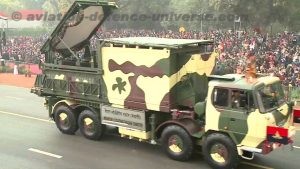
Towed Howitzer-155mm/52 Caliber – In a major development the principle project to buy 1580 modern and state of art howitzers finally reached the culmination stage in 2019, after almost five years of relentless trials and evaluations. The project involved direct supply of 400 guns, followed by the indigenous manufacture of the remaining 1180 guns by OFB under a full transfer of technology – In this long drawn process the Israeli Elbit Systems ATHOS gun finally emerged as the clear winner. It would be prudent to mention here the price quoted by Elbit for ATHOS is even lower than the Dhanush gun. The significant feature of this project has been the involvement of major private sector defence companies who tied up with the foreign vendors – Bharat Forge with Elbit and Larson & Toubro (L & T) with Nexter. However, despite two years since culmination of trials the final decision to sign the contract is yet to be taken – this should not come as a surprise given the now familiar Indian defence procurement procedure complexities and absurdities. This despite the Army raising the red flag regarding the urgent need to fill the critical operational voids existing in the available artillery resources on our Northern Borders, especially in terms of Medium Artillery. One of the reasons being cited by the Government for this inordinate delay is the development of the indigenously built ATAGS and Atamnirbharta – it’s a different matter that the ATAGS is still in the preliminary trials stage and has a long way to go.
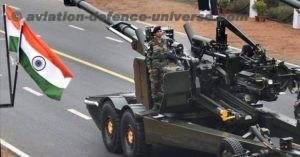
ATAGS – The ATAGS is a 155mm/52 Caliber towed gun system being developed by the DRDO with the involvement of two major private sector entities, Bharat Forge and Tata Power SED. Two prototypes have been produced one each by Bharat Forge and Tata Power SED which were undergoing development user trials since last year, but the trials had to be stopped due a case of barrel burst last year in September. As per reports the problem has been duly addressed by DRDO and the trials have recommenced this year. While the ATAGS is showing great promise, the DRDO along with Bharat Forge and Tata Power need to address some serious concerns raised by the Army, especially related to its much heavier weight compared to other comparable systems like the ATHOS – it presently weighs approximately 18 Tons compared to other similar systems which are in the range of 14-15 Tons. It will also be pertinent to mention here that the ATAGS cost quoted is between 16-18 Cr per piece which is almost double of the ATHOS gun at 10-11 Cr per piece – this indeed is ridiculous and cannot be accepted, irrespective of the Atamnirbharta spirit. While there is no doubt that that the ATAGS will be the main stay of the Artillery in the coming two to three decades, the reality is that it is still in the process of preliminary trials and its induction is at least 3-4 years away. Keeping this reality in mind and in view of the unpredictable security situation on our Northern Borders the Army is pressing the Government to fast track the direct import of 400 ATHOS guns to overcome the operational voids in the medium artillery in high altitudes. This will also be the timeframe by which the ATAGS would be ready for induction and will obviously cater for the balance 1180 towed guns required. The Government needs to take the decision on ATHOS on priority in view of the deadline for import embargo of towed guns for Dec 2021.
Ammunition – The inadequacy of ammunition remains a critical issue, for without ammunition the Guns and Rocket Systems are of no value. The Kargil war exposed our vulnerability to ammunition shortage to sustain even a short term conflict and even now in the ongoing standoff with China the Government had to provoke emergency financial powers to acquire ammunition ex import to meet the acute operational requirement of the forces. It is therefore heartening to note that the Government is addressing this issue on priority, with the active involvement of public-private sector entities in manufacturing. The Artillery is also looking at acquisition of smart ammunition especially PGMs which have the capability to hit pin point targets with a very high rate of accuracy, thereby ensuring first round hit probability and destruction – a true precision weapon. Presently the Artillery has in its inventory the Russia laser guided Krasnopol shells and the recently acquired GPS guided M982 Excalibur PGMs from Raytheon in US – 1200 shells were acquired in 2019 and the Army is looking at acquiring additional shells in the coming months – this will act as a tremendous force multiplier.
Conclusion
While the Artillery’s modernization process was moving ahead smoothly till about a year back, it is presently stumbling due to various issues both technical and administrative enumerated above, the success of projects like the M777 ULH and K9 Vajra-T notwithstanding. A major concern remains with regards to the biggest (1580 pieces) and the most critical project of Towed Gun Systems, on which the final decision is pending with the Government for the last two years despite red flags raised by the Army. The Army’s demand to directly acquire 400 ATHOS Towed Howitzers to meet the critical operational voids on our Northern borders in a shorter timeframe needs to be taken note of and suitable action taken by the MoD on priority before it’s too late. The fact that the induction of ATAGS is still 3-4 years away and with the DRDO required to address major issues especially related to its excessive weight must be kept in mind. Simultaneously, the OFB needs to get its act together and address the defects in the Dhanush on priority and thereafter ramp up production to meet its commitment of 114 guns – it needs to seriously look at involving private entities like Bharat Forge and L&T in this project. There is no doubt that the ATAGS and the Dhanush will finally be the main stay of the future fire power of the Indian Artillery, but in the interim critical voids need to be filled. The state of ammunition continues to remain an area of concern even though the Government in a major policy shift has given Licenses to the private sector for development / production of certain type of ammunition like fuzes and charge systems, but a lot more needs to be done – this in fact is one area where Atamnirbharta is the need of the hour. There is an urgent need to remove bottlenecks and monitor crucial projects like the ATAGS for their developmental timelines, in order to regain the artillery modernisation momentum.
(Lt Gen BS Pawar is a Delhi based defence analyst, former Head of the Army Aviation Corps and Commandant School of Artillery. The views in the article are solely the author’s. He can be contacted at editor.adu@gmail.com.)























































































































